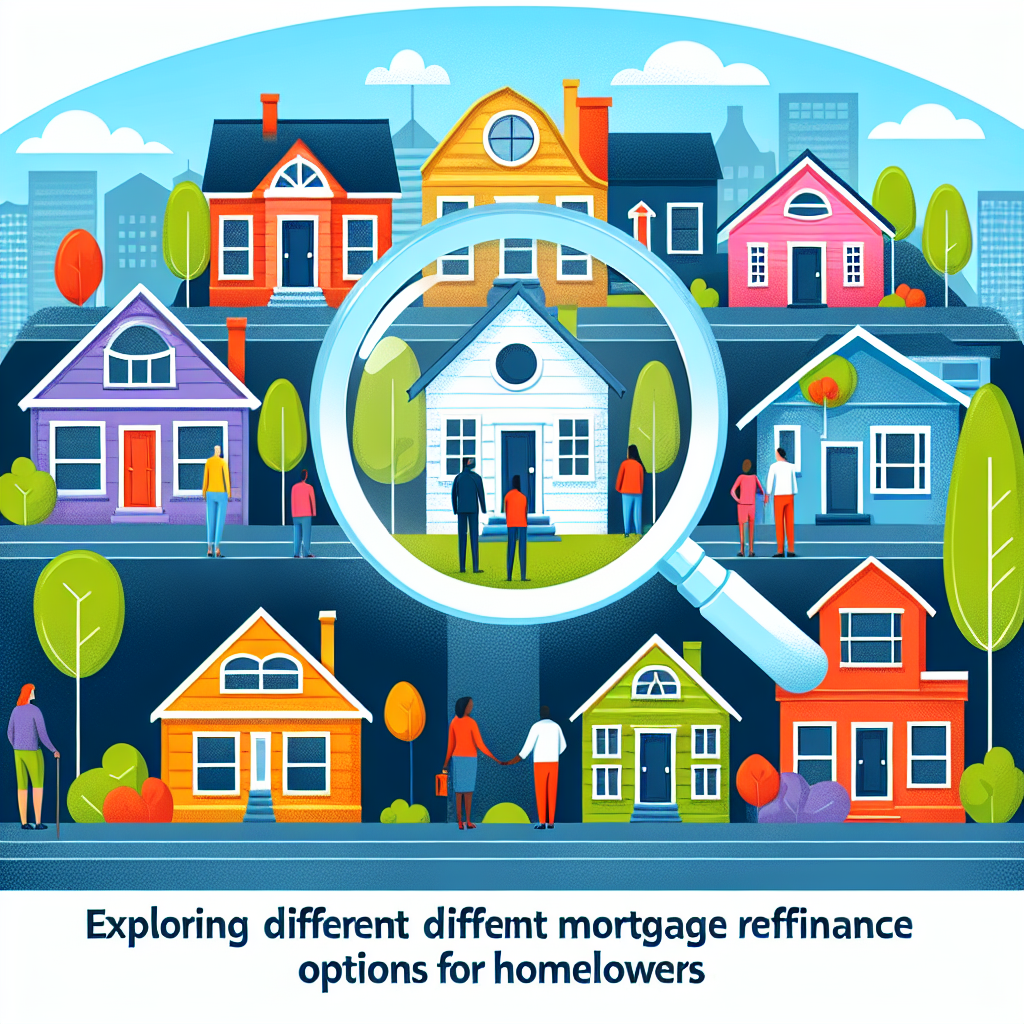Refinancing a mortgage can be a strategic decision for homeowners seeking to optimize their financial situation. With various options available, understanding the right refinance choice tailored to your circumstances can lead to significant savings. This article delves into different mortgage refinance options to help you make informed decisions.
What is Mortgage Refinance?
Mortgage refinancing involves replacing an existing mortgage with a new one, typically with different terms. Homeowners often refinance to lower monthly payments, adjust loan length, or tap into home equity for cash. The new mortgage pays off the old one, and the homeowner then begins making payments on the new loan.
Benefits of Refinancing Your Mortgage
Before diving into the types of refinance options, it’s essential to consider the benefits:
- Lower Monthly Payments: With lower interest rates, homeowners can reduce their monthly obligations.
- Shorter Loan Term: Refinancing to a shorter term can save on interest costs over the life of the loan.
- Access to Home Equity: Cash-out refinancing allows homeowners to borrow against their equity for renovations, debt repayment, or other financial needs.
- Switching Loan Types: Some homeowners may choose to switch from an adjustable-rate mortgage (ARM) to a fixed-rate mortgage for stability.
Types of Mortgage Refinance Options
1. Rate-and-Term Refinance
A rate-and-term refinance modifies either the interest rate, the loan term, or both. Homeowners often pursue this option to take advantage of lower interest rates or to change the loan duration. This type of refinancing is typically straightforward, requiring minimal paperwork.
2. Cash-Out Refinance
A cash-out refinance replaces the existing mortgage with a new one for a larger amount, allowing homeowners to access their equity. This method can provide cash for home improvements, debt consolidation, or other financial needs. However, it’s crucial for homeowners to factor in the risks, as it can lead to higher monthly payments and longer loan terms.
3. Cash-In Refinance
Conversely, a cash-in refinance occurs when homeowners make a lump-sum payment to reduce their loan balance. This option is beneficial for those looking to lower their monthly payments or reduce their overall interest costs. By “buying down” the loan, homeowners can secure better rates and terms.
4. Streamline Refinance
Streamline refinancing is tailored for borrowers with existing loans backed by government programs, like FHA or VA loans. These options typically require less documentation and may not require a credit check or appraisal, making the process quicker and easier. Streamlined processes can enable homeowners to secure a lower rate with minimal hassle.
5. Adjustable Rate Mortgage Refinance
Homeowners with an adjustable-rate mortgage (ARM) may opt to refinance to lock in a fixed interest rate, providing stability against future rate hikes. This refinancing option is particularly appealing for those concerned about rising interest rates in the long term.
6. FHA Refinance
The Federal Housing Administration (FHA) offers refinancing options for those with FHA loans. Homeowners can opt for FHA Streamline Refinance, which provides simple qualification requirements and low-cost alternatives, allowing homeowners to lower monthly payments without extensive paperwork.
Key Considerations When Refinancing
Interest Rates
Monitoring interest rates is key in deciding when to refinance. A general rule of thumb is to refinance if you can lower your rate by at least 0.75-1% to make the process worthwhile.
Closing Costs
Just like with the initial mortgage, refinancing involves closing costs that can range from 2% to 5% of the loan amount. It’s important to evaluate whether the potential savings justify these costs.
Loan-to-Value (LTV) Ratio
Most lenders look at your home equity, expressed as a Loan-to-Value ratio. A lower ratio increases your chances of qualifying for a refinance and securing better rates. A LTV ratio of 80% or less is typically ideal.
Credit Score
A strong credit score can help secure more favorable rates and terms. Homeowners should assess their credit before refinancing, taking steps to improve it if necessary.
Conclusion
Refinancing your mortgage can be a powerful tool for managing your home finances. By exploring different mortgage refinance options, you can tailor the process to your unique needs, whether you’re looking to lower monthly payments, access cash, or consolidate debt. Be sure to weigh the pros and cons of each option, considering factors like interest rates, closing costs, and your long-term financial goals.
Explore the possibilities and consult with a mortgage professional to find the best refinancing path for your needs. With the right refinance strategy, you can optimize your home’s financial position and pave the way for a more secure financial future.

